-
 Bitcoin
Bitcoin $105,278.9859
4.61% -
 Ethereum
Ethereum $2,414.7741
8.20% -
 Tether USDt
Tether USDt $1.0007
0.05% -
 XRP
XRP $2.1600
7.53% -
 BNB
BNB $639.5433
3.75% -
 Solana
Solana $144.3830
9.37% -
 USDC
USDC $1.0001
0.02% -
 TRON
TRON $0.2742
3.84% -
 Dogecoin
Dogecoin $0.1640
8.57% -
 Cardano
Cardano $0.5811
7.49% -
 Hyperliquid
Hyperliquid $37.2466
5.28% -
 Sui
Sui $2.8243
14.84% -
 Bitcoin Cash
Bitcoin Cash $460.8816
2.22% -
 Chainlink
Chainlink $12.9580
11.75% -
 UNUS SED LEO
UNUS SED LEO $9.1359
1.23% -
 Avalanche
Avalanche $18.2302
10.30% -
 Stellar
Stellar $0.2463
7.80% -
 Toncoin
Toncoin $2.9151
7.18% -
 Shiba Inu
Shiba Inu $0.0...01163
9.79% -
 Hedera
Hedera $0.1532
14.01% -
 Litecoin
Litecoin $85.3310
6.29% -
 Monero
Monero $308.8215
2.90% -
 Ethena USDe
Ethena USDe $1.0007
0.03% -
 Polkadot
Polkadot $3.4259
9.42% -
 Dai
Dai $1.0002
0.01% -
 Bitget Token
Bitget Token $4.1742
3.19% -
 Uniswap
Uniswap $6.8272
8.53% -
 Pepe
Pepe $0.0...09939
12.29% -
 Pi
Pi $0.5358
6.03% -
 Aave
Aave $257.3092
12.83%
How to enable biometrics in OKX Wallet? Fingerprint/face unlock setting guide
Enable biometrics on your OKX Wallet for added security and convenience; follow our guide to set up fingerprint or face unlock easily.
May 19, 2025 at 07:43 am
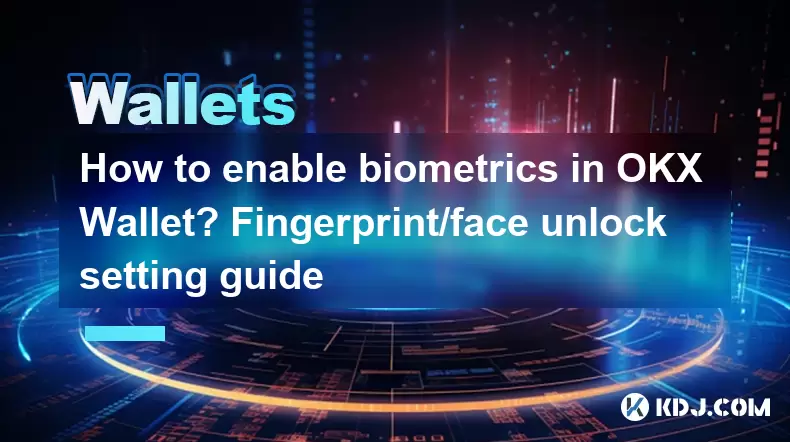
Enabling biometrics in the OKX Wallet adds an extra layer of security and convenience to your cryptocurrency management. By setting up fingerprint or face unlock, you can quickly access your wallet without compromising on security. This guide will walk you through the detailed steps to enable biometrics on your OKX Wallet, ensuring you can use your device's built-in security features effectively.
Prerequisites for Enabling Biometrics
Before you start, ensure that your device supports biometric authentication. Most modern smartphones come equipped with fingerprint sensors or facial recognition capabilities. Additionally, make sure that your OKX Wallet app is updated to the latest version, as older versions might not support biometric features.
Accessing the OKX Wallet Settings
To begin the process of enabling biometrics, you need to access the settings within the OKX Wallet app. Here's how you can do it:
- Open the OKX Wallet app on your device.
- Navigate to the 'Settings' menu, usually found at the bottom right corner of the app's interface.
- Scroll down until you find the 'Security' section.
Enabling Fingerprint Unlock
If your device supports fingerprint recognition, you can enable fingerprint unlock for your OKX Wallet. Follow these steps:
- In the 'Security' section, look for an option labeled 'Fingerprint Unlock' or similar.
- Tap on 'Fingerprint Unlock' to proceed.
- You will be prompted to enter your current password or PIN to confirm your identity.
- After entering your password, you will be asked to place your finger on the fingerprint sensor to register your fingerprint.
- Follow the on-screen instructions to complete the fingerprint registration process.
- Once your fingerprint is successfully registered, the OKX Wallet will use it for future logins.
Enabling Face Unlock
For devices that support facial recognition, you can enable face unlock to access your OKX Wallet. Here's how to do it:
- In the 'Security' section, find and tap on 'Face Unlock' or a similar option.
- Enter your current password or PIN to verify your identity.
- You will be prompted to position your face within the designated area on the screen.
- Follow the on-screen instructions to complete the facial recognition setup.
- Once your face is successfully registered, the OKX Wallet will use it for future logins.
Troubleshooting Common Issues
Sometimes, you might encounter issues while setting up biometrics. Here are some common problems and their solutions:
- Fingerprint not recognized: Ensure your finger is clean and dry. Try registering the fingerprint again, using different angles and pressures.
- Face not recognized: Make sure you are in a well-lit environment. Remove any obstructions like hats or glasses, and try the setup process again.
- Biometric options not available: Check if your device supports biometrics and if your OKX Wallet app is updated to the latest version.
Additional Security Measures
While biometrics add a layer of convenience, it's important to maintain other security measures to protect your OKX Wallet:
- Regularly update your app: Keep your OKX Wallet app updated to benefit from the latest security features and bug fixes.
- Use a strong password: Even with biometrics enabled, ensure your password or PIN is strong and not easily guessable.
- Enable two-factor authentication (2FA): Consider enabling 2FA for an additional layer of security, especially for high-value transactions.
FAQs
Q: Can I use both fingerprint and face unlock on the same device?
A: Yes, if your device supports both fingerprint and facial recognition, you can enable both options in the OKX Wallet. This gives you flexibility in how you access your wallet.
Q: What happens if my biometric authentication fails multiple times?
A: If biometric authentication fails multiple times, the OKX Wallet will prompt you to enter your password or PIN as a fallback method. This ensures you can still access your wallet securely.
Q: Is it safe to use biometrics for my OKX Wallet?
A: Biometrics are generally considered safe, as they are tied to your unique physical characteristics. However, always combine biometrics with other security measures like strong passwords and 2FA for maximum protection.
Q: Can I disable biometrics if I no longer want to use them?
A: Yes, you can disable biometrics at any time. Simply go back to the 'Security' section in the OKX Wallet settings and turn off the 'Fingerprint Unlock' or 'Face Unlock' options.
Disclaimer:info@kdj.com
The information provided is not trading advice. kdj.com does not assume any responsibility for any investments made based on the information provided in this article. Cryptocurrencies are highly volatile and it is highly recommended that you invest with caution after thorough research!
If you believe that the content used on this website infringes your copyright, please contact us immediately (info@kdj.com) and we will delete it promptly.
- Texas, Bitcoin, and the Reserve: How the Lone Star State is Pioneering Crypto Adoption
- 2025-06-24 10:45:12
- DOGE Rally: Bullish Surge or Last Shakeout?
- 2025-06-24 10:25:13
- Solaxy's Uniswap Debut: A New Crypto Listing Shaking Up the Market
- 2025-06-24 10:25:13
- Coinbase, Tokenized Trading, and the US Senate: A New Era for Crypto?
- 2025-06-24 10:45:12
- Bitcoin, Crypto Signals, and Hyperliquid: What's the Hype?
- 2025-06-24 11:05:12
- Fadillah's Uzbekistan Mission: Sparking Cooperation in Energy, Tourism, and Education
- 2025-06-24 11:05:12
Related knowledge
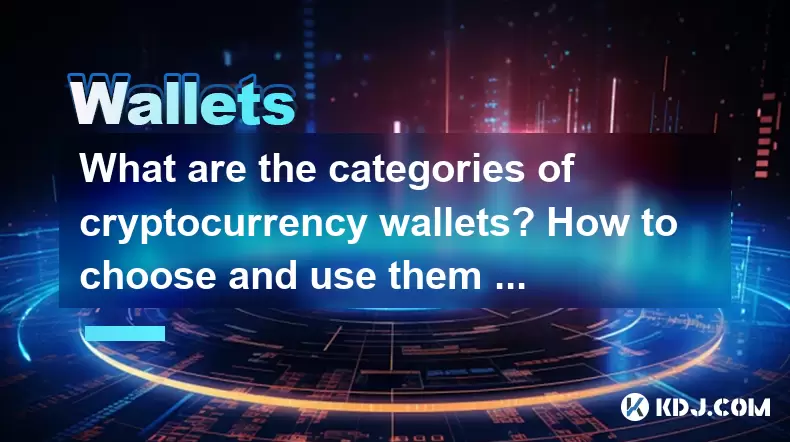
What are the categories of cryptocurrency wallets? How to choose and use them safely?
Jun 21,2025 at 10:42pm
Understanding Cryptocurrency WalletsCryptocurrency wallets are essential tools for anyone involved in the digital asset ecosystem. They allow users to store, send, and receive cryptocurrencies securely. Unlike traditional wallets that hold physical money, crypto wallets manage cryptographic keys—private and public—which interact with blockchain networks...
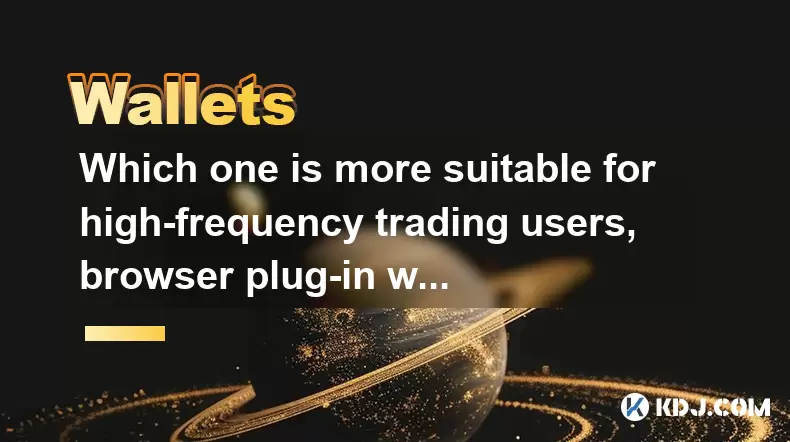
Which one is more suitable for high-frequency trading users, browser plug-in wallets or independent application wallets?
Jun 23,2025 at 08:22am
Understanding the Role of Wallets in High-Frequency TradingFor high-frequency trading (HFT) users in the cryptocurrency market, wallet selection is critical due to the need for speed, security, and seamless integration with trading platforms. HFT involves executing a large number of trades within seconds or even milliseconds, which demands a wallet that...
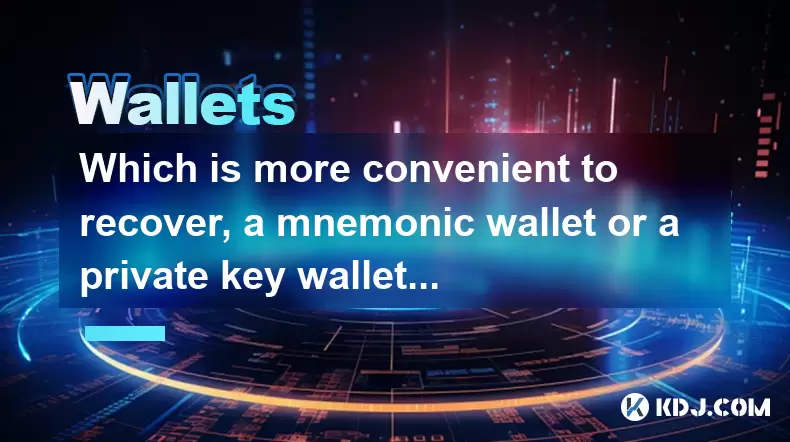
Which is more convenient to recover, a mnemonic wallet or a private key wallet? Will security be compromised?
Jun 20,2025 at 06:36am
Understanding Mnemonic Wallets and Private Key WalletsIn the world of cryptocurrency, wallet recovery is a crucial aspect that users must understand before storing digital assets. Two popular methods for securing and recovering wallets are mnemonic phrases and private keys. Both serve as gateways to access funds, but they differ significantly in terms o...
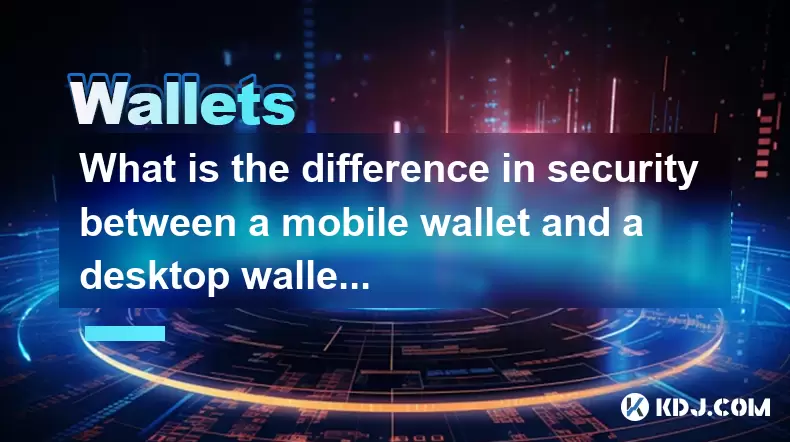
What is the difference in security between a mobile wallet and a desktop wallet?
Jun 22,2025 at 12:35pm
Understanding the Security Aspects of Mobile WalletsMobile wallets are digital wallets designed to run on smartphones, allowing users to store, send, and receive cryptocurrencies conveniently. The security of mobile wallets largely depends on how well the device is protected from malware, phishing attacks, and unauthorized access. One key feature of mob...
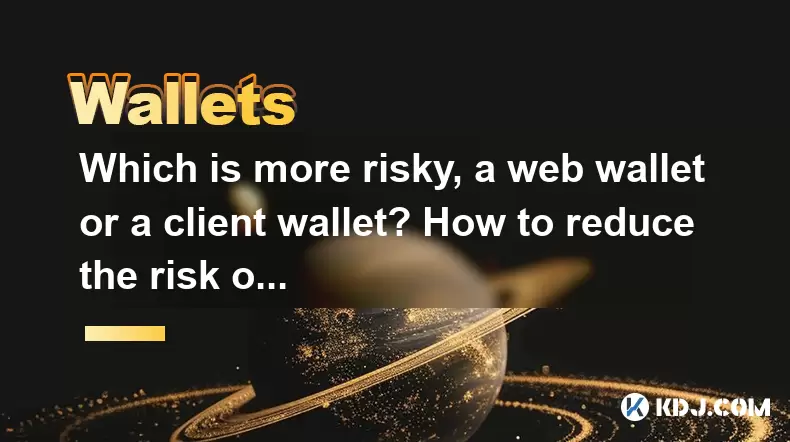
Which is more risky, a web wallet or a client wallet? How to reduce the risk of use?
Jun 22,2025 at 09:21pm
Understanding Web Wallets and Client WalletsWhen managing cryptocurrencies, choosing the right type of wallet is crucial. Web wallets and client wallets are two popular options among users, each with its own set of advantages and disadvantages. A web wallet operates through a browser interface and is usually hosted online by third-party services. This m...

How is a multi-signature wallet safer than a single-signature wallet?
Jun 21,2025 at 07:56pm
Understanding Signature Mechanisms in Cryptocurrency WalletsIn the world of cryptocurrency, securing digital assets is paramount. One of the core aspects of this security lies in the signature mechanism used by wallets. A single-signature wallet requires only one private key to authorize a transaction. This means that if an attacker gains access to that...

What are the categories of cryptocurrency wallets? How to choose and use them safely?
Jun 21,2025 at 10:42pm
Understanding Cryptocurrency WalletsCryptocurrency wallets are essential tools for anyone involved in the digital asset ecosystem. They allow users to store, send, and receive cryptocurrencies securely. Unlike traditional wallets that hold physical money, crypto wallets manage cryptographic keys—private and public—which interact with blockchain networks...

Which one is more suitable for high-frequency trading users, browser plug-in wallets or independent application wallets?
Jun 23,2025 at 08:22am
Understanding the Role of Wallets in High-Frequency TradingFor high-frequency trading (HFT) users in the cryptocurrency market, wallet selection is critical due to the need for speed, security, and seamless integration with trading platforms. HFT involves executing a large number of trades within seconds or even milliseconds, which demands a wallet that...

Which is more convenient to recover, a mnemonic wallet or a private key wallet? Will security be compromised?
Jun 20,2025 at 06:36am
Understanding Mnemonic Wallets and Private Key WalletsIn the world of cryptocurrency, wallet recovery is a crucial aspect that users must understand before storing digital assets. Two popular methods for securing and recovering wallets are mnemonic phrases and private keys. Both serve as gateways to access funds, but they differ significantly in terms o...

What is the difference in security between a mobile wallet and a desktop wallet?
Jun 22,2025 at 12:35pm
Understanding the Security Aspects of Mobile WalletsMobile wallets are digital wallets designed to run on smartphones, allowing users to store, send, and receive cryptocurrencies conveniently. The security of mobile wallets largely depends on how well the device is protected from malware, phishing attacks, and unauthorized access. One key feature of mob...

Which is more risky, a web wallet or a client wallet? How to reduce the risk of use?
Jun 22,2025 at 09:21pm
Understanding Web Wallets and Client WalletsWhen managing cryptocurrencies, choosing the right type of wallet is crucial. Web wallets and client wallets are two popular options among users, each with its own set of advantages and disadvantages. A web wallet operates through a browser interface and is usually hosted online by third-party services. This m...

How is a multi-signature wallet safer than a single-signature wallet?
Jun 21,2025 at 07:56pm
Understanding Signature Mechanisms in Cryptocurrency WalletsIn the world of cryptocurrency, securing digital assets is paramount. One of the core aspects of this security lies in the signature mechanism used by wallets. A single-signature wallet requires only one private key to authorize a transaction. This means that if an attacker gains access to that...
See all articles
























































































